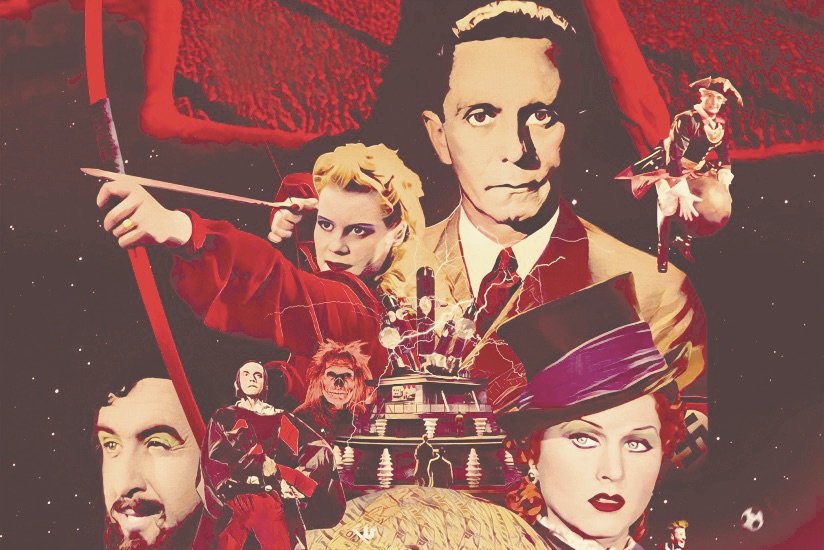
The film opens with dozens of pretty, high-stepping girls dancing with military precision to a catchy tune. Is this a glitzy Hollywood production, an MGM or RKO musical extravaganza choreographed by the great Busby Berkeley?
Actually, it’s a scene from “Hitler’s Hollywood,” a fascinating, if sometimes frightening, overview of some 1,000 movies produced during the Fuhrer’s reign from 1933 to 1945.
Hitler himself was a great film buff, and only three days after assuming power, he spent an evening attending a movie premiere. However, the hands-on overseer of a film’s ideology, plotline and even casting was the Nazi propaganda minister, Joseph Goebbels.
American films were highly popular with the German masses. I remember as a pre-teenager in Berlin being fascinated by “Captains Courageous” with Spencer Tracy. Goebbels was eager to replicate the Hollywood dreamland, its impact on the masses, not least its profits, and he made stars of two counter Shirley Temples.
The director of “Hitler’s Hollywood” is 50-year-old Rüdiger Suchsland, who made his mark and set his tone in Germany with his first film in 2015, “From Caligari to Hitler.”
The themes of Nazi-era films ranged from musicals, fantasies, adventures and romances to sports, including Leni Riefenstahl’s famous coverage of the 1936 Berlin Olympic Games in her 1938 documentary, “Olympia: Festival of Nations.”
“We should never forget that the Nazi ideology, National Socialism, was communicated to the German people primarily through film.” — Rüdiger Suchsland
As the war turned against Germany, Goebbels tried to stiffen the nation’s collective spine by dramatizing the country’s glorious battles of the past. One of the last Nazi films released before the end of World War II was Veit Harlan’s 1945 film “Kolberg,” dramatizing the fierce resistance of the Prussian city against Napoleon’s armies in 1807.
Most shameful were a trio of virulently anti-Semitic films all made in 1940: Erich Waschneck’s “The Rothschilds,” another Veit Harlan film, “Jew Suss,” and Fritz Hippler’s “The Eternal Jew.”
But even in seemingly non-ideological films, with such titles as “Melody of a Great City” (1943), “The Woman of My Dreams” (1944) and “The Big Game” (about soccer) (1942), “we should never forget that the Nazi ideology, National Socialism, was communicated to the German people primarily through film,” Suchsland wrote in press notes for “Hitler’s Hollywood.”
In an email interview, Suchsland discussed the major difference between Hollywood films extolling the virtues and joys of the American way of life and Goebbels doing the same for German films.
“The biggest difference is the German way of life,” Suchsland said. “To be more specific, the Nazi way of dictatorship controlled by an ideological program. … Busby Berkeley comes to mind, too. He is really daring and over the top. The Nazis are limited most of the time by their petit-bourgeois taste, their small escapism. Berkeley’s imaginings are big and avant-garde.”
With Jewish artists either expelled from or fleeing Germany, Suchsland said, “The German film industry lost talent, humor, variety, diversity and the ability to think outside the box. In any case, imagining the Reich of Hitler without his hatred of Jews would be an illusion. There is no fascism without scapegoats.”
“Hitler’s Hollywood” opens May 11 at Laemmle’s Music Hall in Beverly Hills and Town Center 5 in Encino.






















 More news and opinions than at a Shabbat dinner, right in your inbox.
More news and opinions than at a Shabbat dinner, right in your inbox.